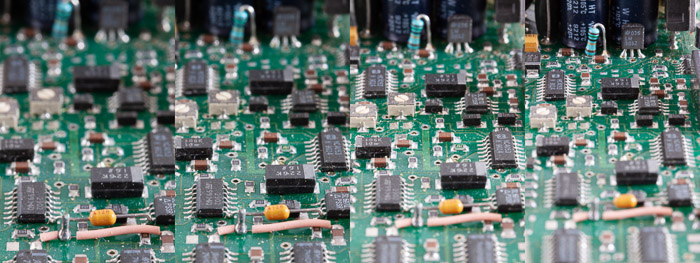

I like to put all of my images to be stacked into a folder of their own. In just a few minutes, we can put together the final, focus stacked image.įirst of all, we want to make sure that we have all of our images on our computer in the same folder. While there are plenty of viable options, Photoshop has great features to use when you're focus stacking. Photoshop has a great amount of power in aligning our images, but it's always the goal to get as much right during the shoot as is possible. It's essential to use a tripod, and attempt to move the camera as little as possible while grabbing the frames. The images were shot at f/5.6 to add sharpness and a bit of depth of field, but even stopping down further when shooting macro is often not enough to increase the depth of field to a usable level. Getting enough frames in the shooting process is essential to making sure that the post-production goes well. The first frame we grabbed also shows that each frame doesn't have the entire watch in focus here we see just the front of watch band being sharp.Īgain, the idea here is that each individual frame doesn't get enough of the watch in focus, but six combined frames can give us a simulated unlimited depth of field. The watch was inexpensive, but adequate for our tutorial's purpose. I used some dark blue cloth for maximum contrast between the subject and the background, and a small piece of velcro to prop up the watch in a way that showed it off best. I wanted to light the watch in a way that highlighted it, so I used some inexpensive plug-in constant lights (as opposed to flash units) and positioned them carefully surrounding the setup.

From the front of the band to the back of the band, we can't get the entire watch in sharp focus with a single image. As the watch is laid out there is some depth to the image. I chose a watch to illustrate the power of increased depth of field through focus stacking. This long focal length also decreases our depth of field, so focus stacking is incredibly useful in this situation. One thing to note: the OM-D is a micro 4/3 sensor camera with a 2x crop factor, effectively making the lens a 110mm lens. I used an adapter to use the F-mount lens on the OM-D. This combination makes for incredibly sharp macro photographs. I chose an older Nikon 55mm Micro-NIKKOR f/3.5 lens on an Olympus OM-D. This technique is most useful when using a macro lens.

This lens is effectively 110mm given the 2x crop factor, and getting the entire watch in focus required us to use the focus stacking technique we're taking a look at today. We chose the Olympus OM-D, a micro four-thirds camera with a Nikon 55mm Micro-NIKKOR attached using an adapter.


 0 kommentar(er)
0 kommentar(er)
